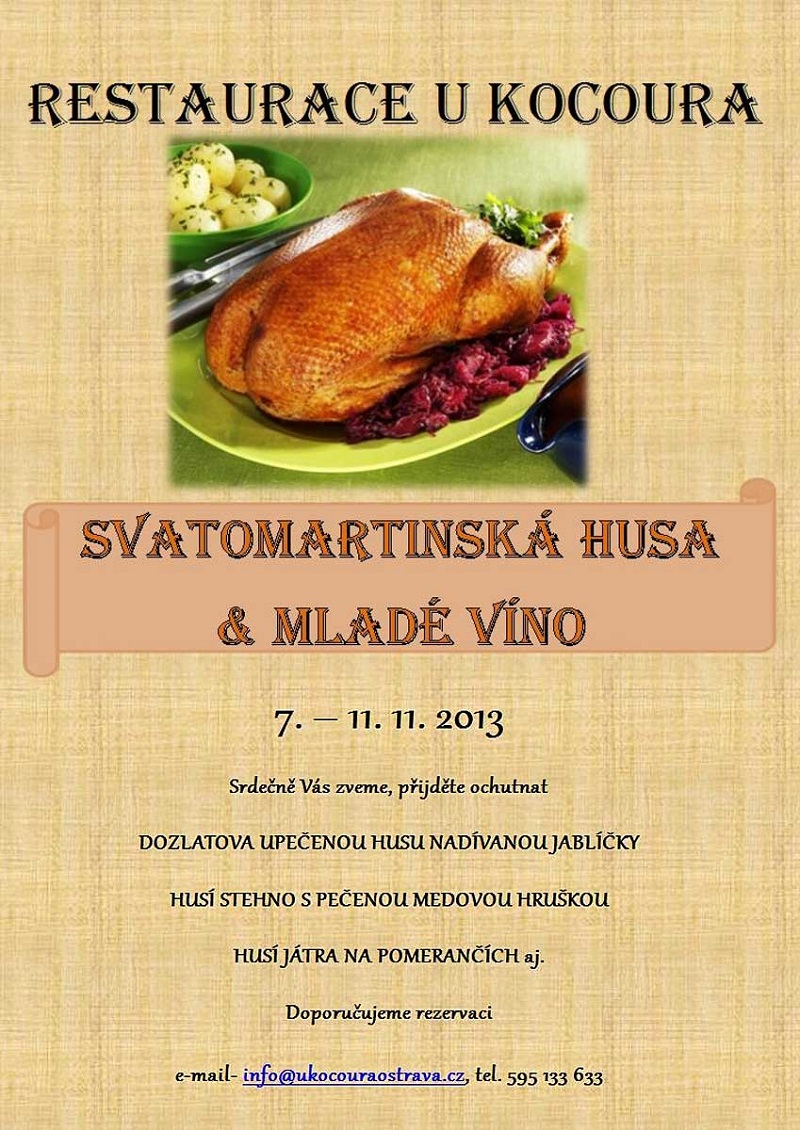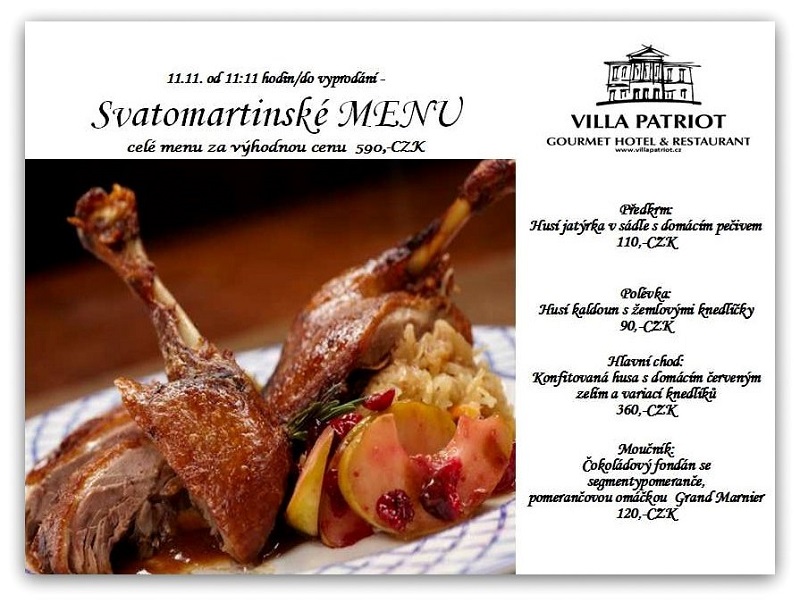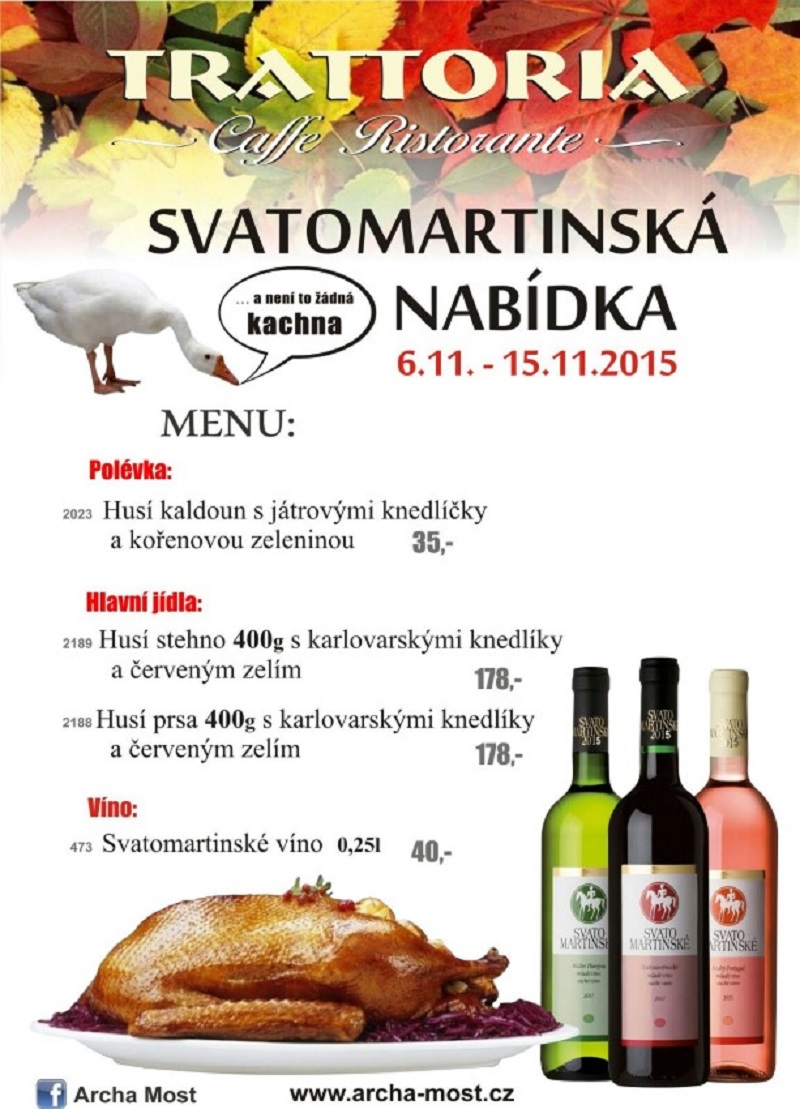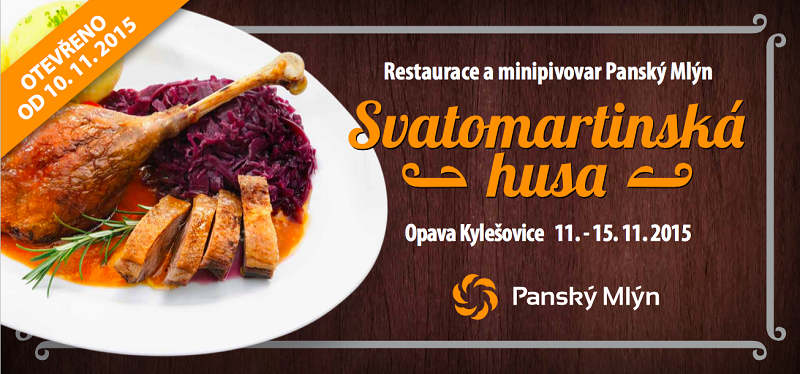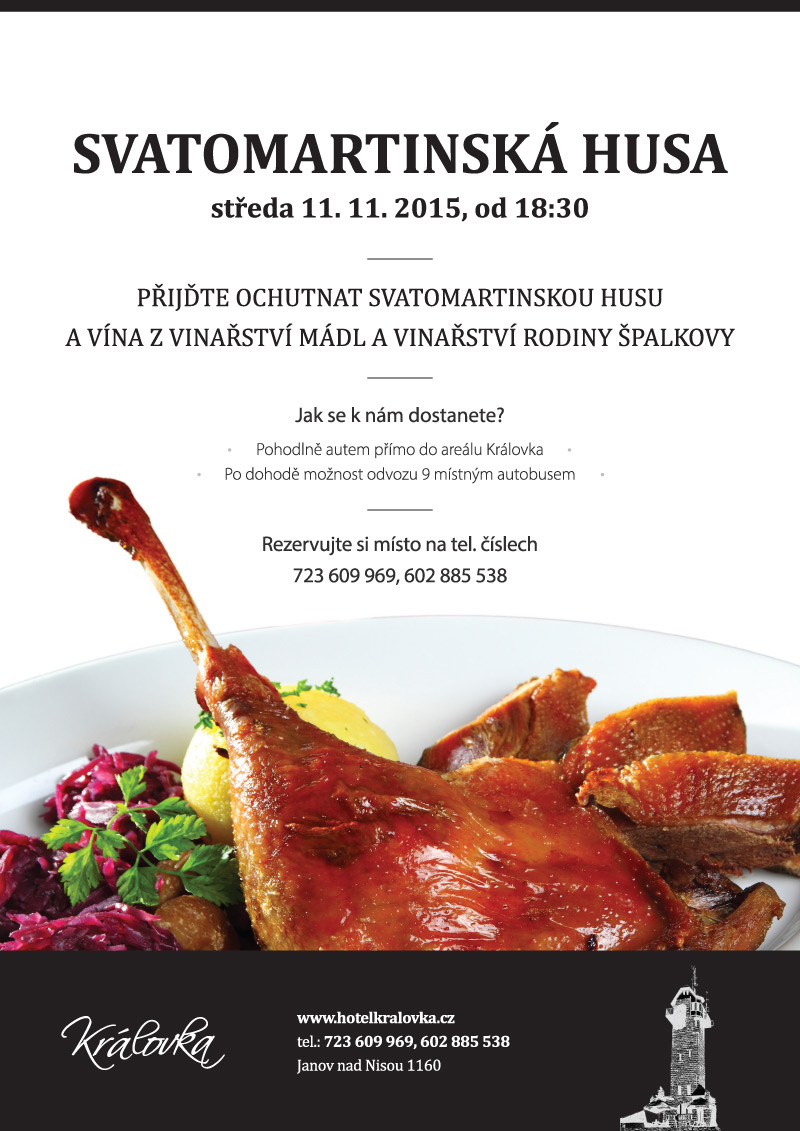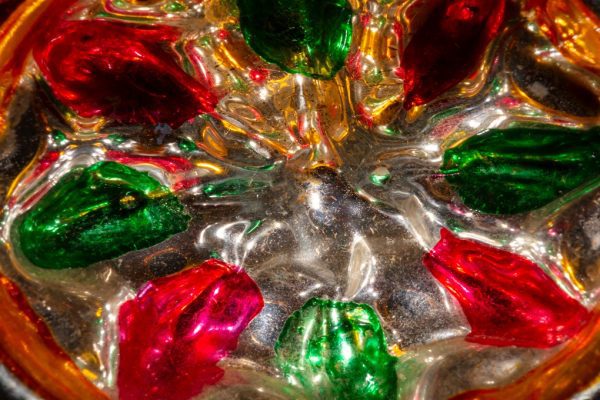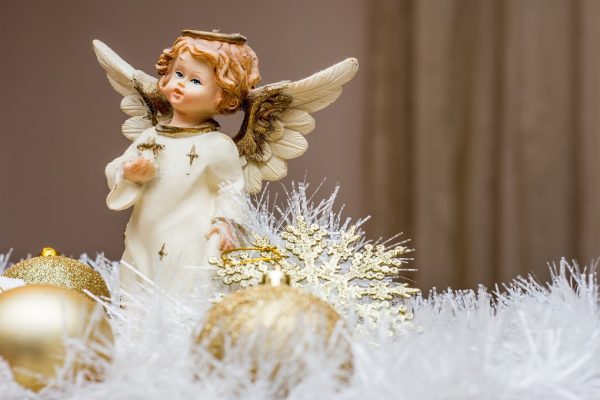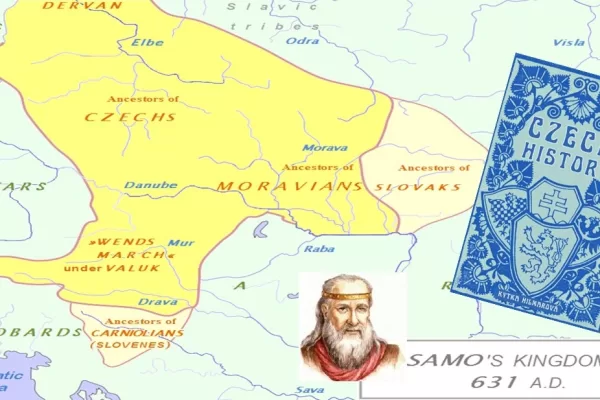Today is the 11th of November – also known as St. Martin’s Day, Martinmas or the Feast of Saint Martin. It is a day in which people not only remember and honor St. Martin of Tours, but is also a day traditionally associated with the fall harvest. In the Czech Republic, it is time for the traditional Czech Goose Dinner. In the past, it was a day when farm hands were hired to “bring in” the fall harvest and animals were slaughtered in preparation of winter.
The holiday has its roots in the Eastern Byzantine Church, where the fast before Christmas, the quadragesima Sancti Martini, still measures up to 40 days. And begins the day after the feast of St. Martin. From this stems its somewhat carnivalesque character with different traditions of merrymaking documented from all over Europe with the processions of children carrying lanterns, people eating goose and drinking new wine.
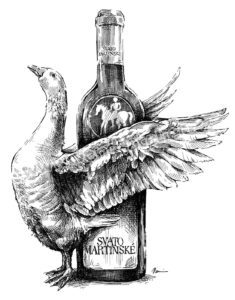
Illustration © Miroslav Vomáčka
St. Martin’s wines are the first wines of the new year. These are fresh and fruity wines, which matured for only a few hours, but in that short amount of time, they get their distinctive character. Wine makers recommend that these young wines be drunk until Easter, while they keep their freshness, well… fresh.
In the Czech Republic, it is also a time of eating a roasted goose.
Martin of Tours was born in 316 AD in what is now modern-day Hungary. Since his father was a veteran Roman officer, he was required to join the Roman cavalry – which he did at the age of fifteen. In 334 or 335, he is believed to have been placed in the Emperor’s elite cavalry unit – one which followed the Emperor around the provinces to protect him from attacks.
St. Martin would serve in the Roman military for another two years before he would go on to become a disciple of Hilary of Poitiers. It was also then that he decided to convert to Christianity. At this time, he refused to fight anymore and was later imprisoned for his refusal to fight.
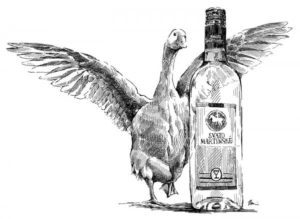
Illustration © Miroslav Vomáčka
Later, he became a monk and founded a monastery in Gaul at Marmoutier where he became Bishop of Tours in 371, where he began a campaign to destroy all of the pagan altars and temples that existed during the time. During much of this campaign, he received much vocal opposition from the priests of many pagan religions – particular those of the druids. However, he prevailed and replaced many of the religious institutions of these faiths with institutions devoted to Christianity.
Based on legend, becoming the Bishop was a career choice he vehemently tried to avoid by hiding in the goose-pen of the monastery. However, the geese barked loudly and he was discovered by the people, who carried him in triumph to the throne in the cathedral. It is believed he built the monastery after his appointment to Bishop in order to have a secluded place to withdraw to. In 397, St. Martin died in Candes-Saint-Martin, Gaul.
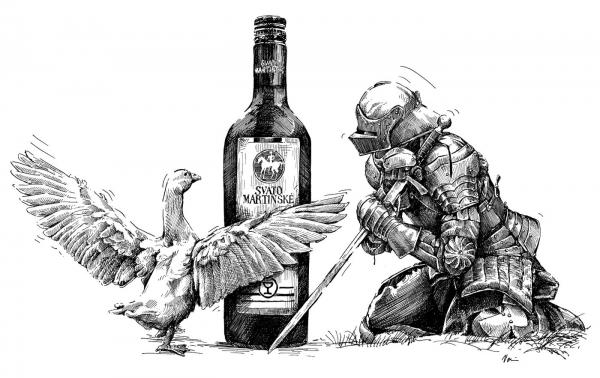
Illustration © Miroslav Vomáčka
Another legends tells us that a flock of geese interrupted St. Martin while he was preaching so they are forever to be be punished on the roasting-pan.
Thus, based on this legend, Czechs and many other Europeans traditionally eat geese at Martinmas, in order to help St. Martin punish the animals that gave his hiding place away.
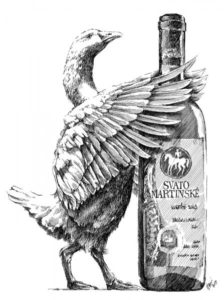
Illustration © Miroslav Vomáčka
Traditionally, the first tasting of St. Martin’s wines opens on November 11th at 11 o’clock at many festive events all over the Czech Republic. Winemakers from Bohemia and Moravia have been observing this tradition for many years and have even combined the traditional Feast of St. Martin feast with wine tasting, likely because a young wine is a perfect match to roast goose due to its higher acidity facilitating digestion.
In order for a wine to be included in the festivals, it must be made from grapes of Müller Thurgau, Veltlínské early morning, Moravian Muscat (White Wine) or Blue Portugal and Svatovavřinecké (Pink and Red Wines) on the territory of the Czech Republic and must also be evaluated by an independent commission.
This Commission is blindly assessing the standard qualities of wine, such as appearance (color and purity), fragrance (intensity, purity, harmony), taste (intensity, purity, harmony, persistence) and overall impression of wine.
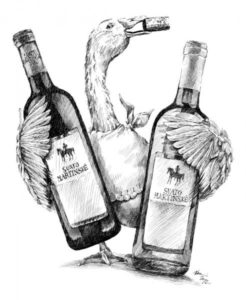
Illustration © Miroslav Vomáčka
Saint Martin is the patron saint of horses, equestrians, calvary soldiers, beggars, geese, poor people (and those who help them), alcoholics (and those who help them), people who run hotels, and people who make wine.
Legend has it that he shared his cloak with a beggar by cutting it in half, so the beggar would be saved from the cold night.
It is believed that Martinmas originated in France in honor of St. Martin, who was, as Wikipedia describes, “known as friend of the children and patron of the poor” in the fourth century. Then the festival quickly spread from France through Germany, the rest of Europe, and Scandinavia.
You may think of it as somewhat like an American Thanksgiving — a feast of sharing and gratefulness. Because it is held in November, in the European part of the world, it occurs just as autumn is ending and winter is coming on, marking a time of full barns and completed harvest in preparation for winter.
In the Czech Republic, a number of restaurants have also adopted a renewed tradition of St. Martin’s wine for theirs and prepare the St. Martin’s menu every year. You can see many special St. Martin’s menus from various restaurants below.
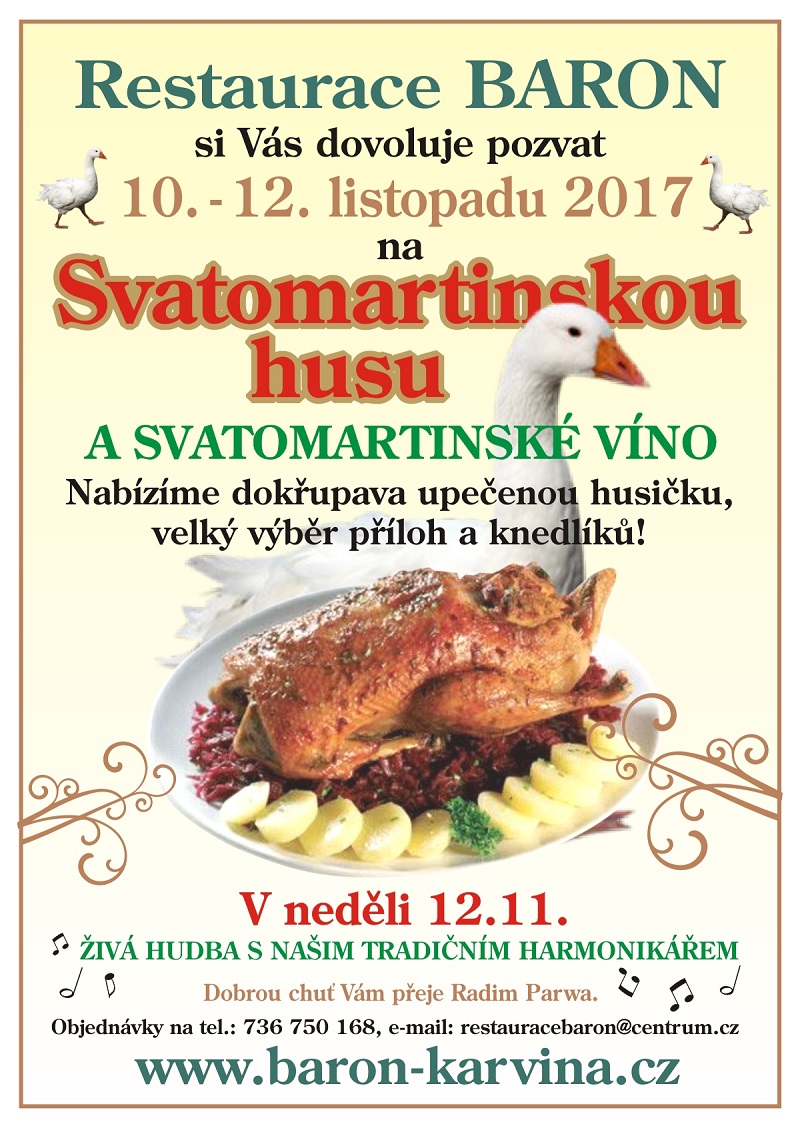
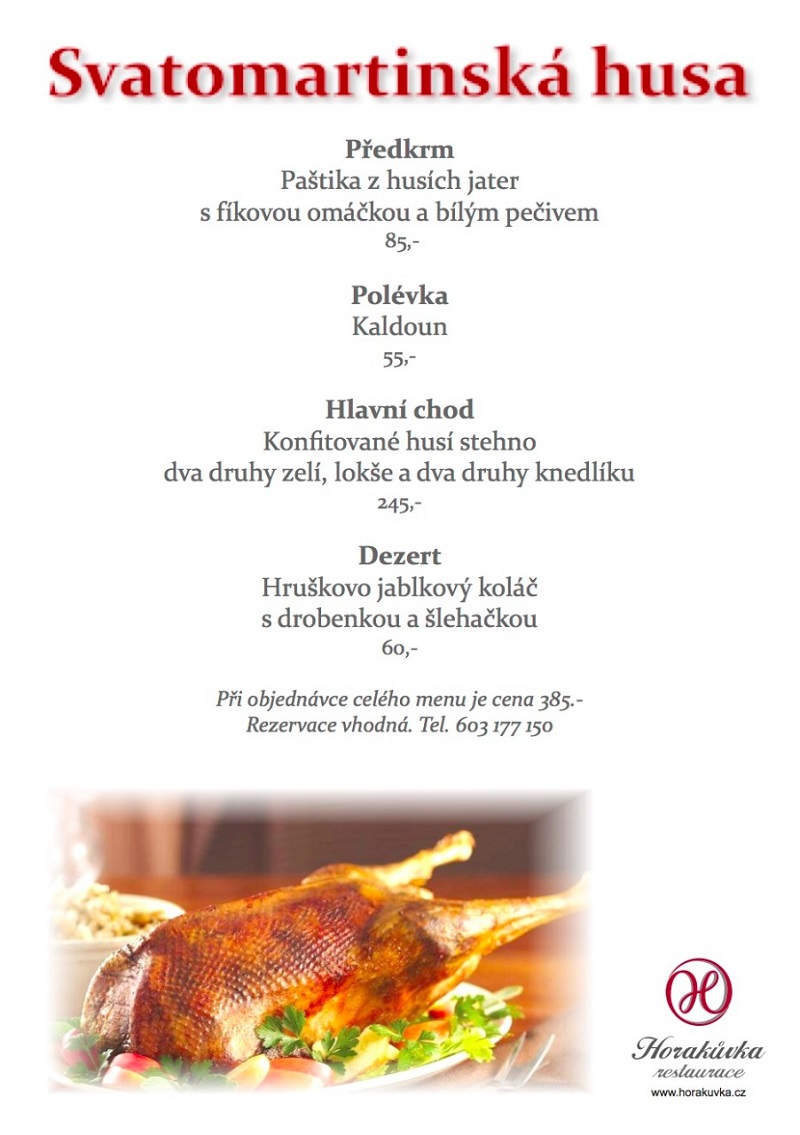
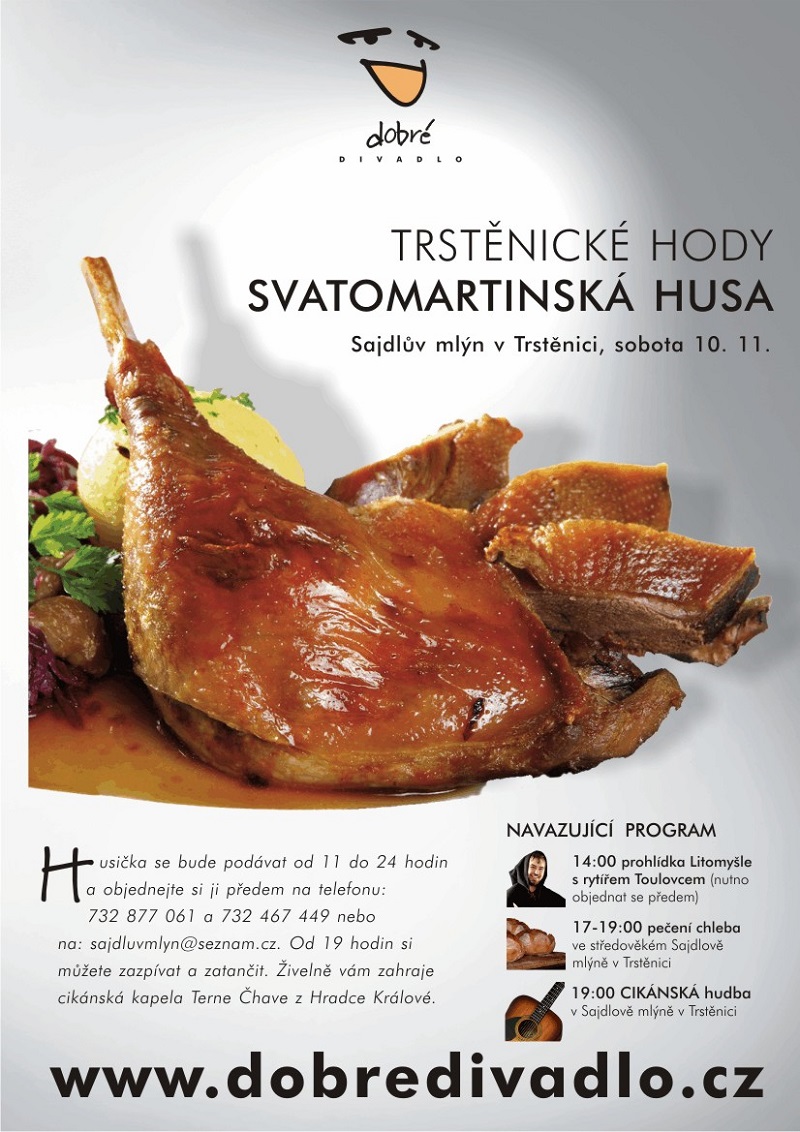
As you can see from the photographs in the fliers above, the Czech traditional seasonal dish is typically served with autumn apples, bread or semolina dumplings and stewed red cabbage. In addition to the roasted goose, people enjoy goose liver as well as a special soup made from goose giblets called kaldoun.
Kaldoun, is a super-thick goose (or duck, chicken or rabbit) soup which is believed to have first appeared in Czech cuisine during the Austro-Hungarian Empire. Some rumors say that it’s originally Italian because of the use of noodles, others believe that it comes from France because of its name (“caldron” means a large pot which was traditionally used for soup preparation) and some insist that it comes from Germany (“die Kaldaunen” means offal). Either way, this wonderful dish full of meat, poultry offal, vegetables, meatballs and noodles is another star of the St, Martins holiday table.
In shops, especially wine shops, Svatomartinské wines first appear on November 11th.
The festivals around the Czech Republic usually include St. Martin arriving on a white horse, bringing with him the new wines and roast goose.
You can watch his arrival in Prague…
And see the celebration in the church with the children singing…
Traditionally, the Czech version of a roast goose is made with caraway seeds and red cabbage. Older Bohemian recipes also include stuffing the goose with apples.
When my children were little, we used to celebrate The Festival of Martinmas at the local Waldorf school. The celebration involved the children carrying homemade lanterns as we walked through the neighborhood in a wonderful procession of singing, reminding all to keep love, light and music in the world.
Black and white illustrations by Miroslav Vomáčka from VendyAtelier.com.
If you have not already subscribed to get TresBohemes.com delivered to your inbox, please use the form below now so you never miss another post.
Remember, we rely solely on your donations to keep the project going.
Become a friend and get our lovely Czech postcard pack.

